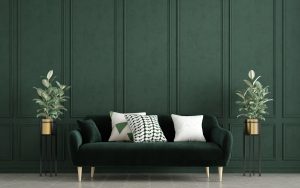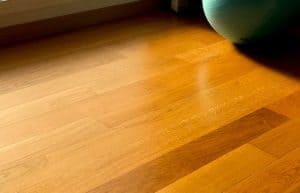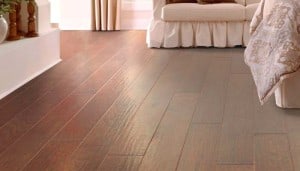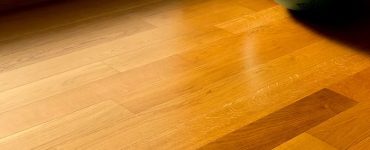Bamboo flooring is quickly becoming a popular choice for homeowners looking to add a unique and stylish flooring option to their home. This type of flooring is made from the bamboo plant, which is a fast growing and renewable resource. Not only does bamboo flooring look good, but it also has a number of benefits that make it a great choice for both indoor and outdoor use.
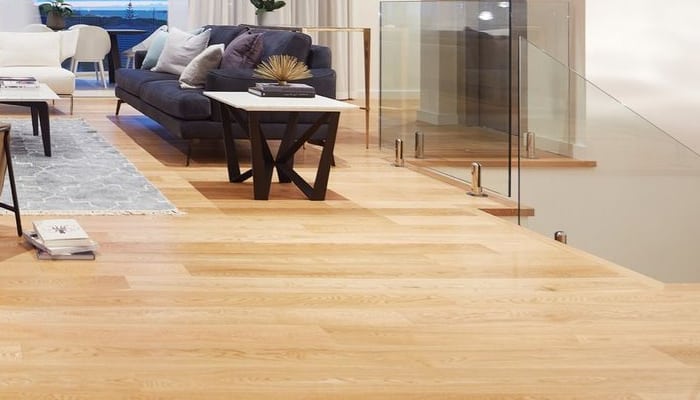
Types of Bamboo Flooring
There are many types of bamboo flooring, each with its own unique benefits. Some bamboo floors are natural and untreated, while others are treated with a sealant or wax to make them more resistant to moisture and stain. Regardless of the type of bamboo flooring you choose, be sure to read the product descriptions carefully to ensure that you’re getting what you expected.
Construction Types of Bamboo Flooring
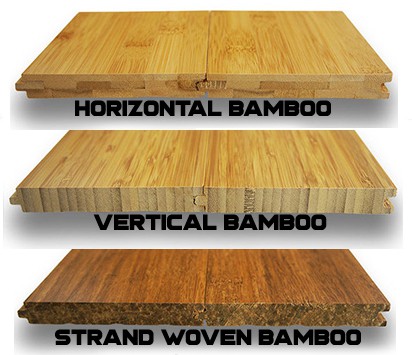
Horizontal Bamboo
Horizontal bamboo flooring is produced by harvesting bamboo culms, which are the long, thin, hollow tubes that make up the bamboo plant. The culms are then cut into thin strips, which are glued together to form a plank. The planks are then milled into a horizontal format and finished with a clear coat of polyurethane.
Vertical Bamboo
Vertical bamboo flooring is a type of flooring that is made from bamboo that has been cut into strips that are then turned on their sides and glued together. The result is a floor that looks very similar to traditional hardwood floors, but that is made from a sustainable material and is much more affordable.
The thin strips allow the flooring to be more stable and less likely to warp over time. The vertical orientation also makes the flooring more resistant to moisture and pests.
Strand Woven Bamboo
Strand woven bamboo flooring is made from bamboo culms that are boiled and then extruded into strands. These strands are then woven together and compressed into panels. The panels are then finished with a UV-cured finish.
Profile Types of Bamboo Flooring
Bamboo flooring is available in a variety of profile types, each with its own unique properties and benefits. Some of the more common profile types include tongue and groove bamboo, click fitting bamboo and parquet block bamboo.
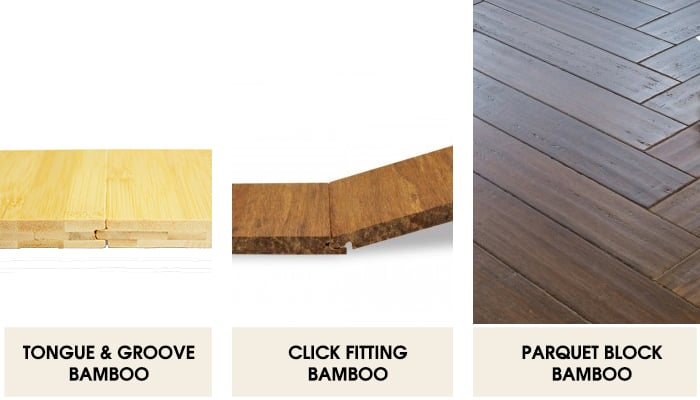
Tongue and Groove Bamboo
This profile type uses bamboo slats that have been cut to fit together like puzzle pieces. The slats are attached to each other using a tongue and groove joint, which creates a strong and stable floor which helps to keep out moisture and pests.
Click Fitting Bamboo
This type of profile is installed by clicking the individual planks of flooring together. This type of installation is much faster and easier than traditional flooring installation methods, and it does not require any adhesive or nails.
Parquet Block Bamboo
The bamboo is cut into small blocks, and then glued together to create the flooring. The flooring is then finished with a sealant to protect it from water and dirt. Parquet Block Bamboo flooring is a durable and eco-friendly option for flooring.
Advantages of Bamboo Flooring
There are many advantages to bamboo flooring. First, it is a renewable resource. Bamboo grows quickly and does not require fertilizer or pesticides. It also releases more oxygen into the atmosphere than trees. Second, bamboo is strong and durable. It can withstand heavy traffic and is resistant to scratches and moisture. Third, bamboo is a beautiful flooring material with a natural color and texture. Fourth, it is a cost-effective option.
Disadvantages of Bamboo Flooring
One disadvantage of bamboo flooring is that it can be relatively expensive compared to traditional hardwood flooring options. Additionally, because bamboo is a natural material, it can be sensitive to changes in humidity levels and may expand or contract depending on the surrounding environment. Bamboo flooring may also be more difficult to install than traditional hardwood floors.
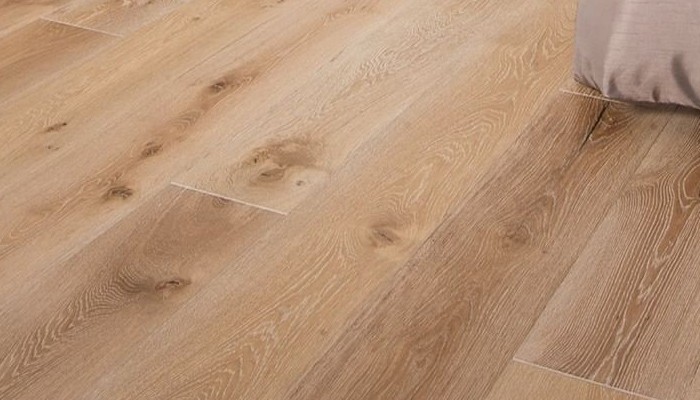
Installation of Bamboo Flooring
Installing bamboo flooring is a great way to add a touch of nature to your home while adding comfort and style. There are a few things you need to know before beginning the installation process.
Check the Condition of Your Subfloor
In order to ensure that the installation is successful, it is important to first check the condition of the subfloor. If the subfloor is not in good condition, then it will need to be repaired before the bamboo flooring can be installed. Otherwise, the flooring may not be stable and could cause damage to the home.
Prep Your Subfloor for Bamboo Installation
The subfloor should be clean and dry before installation. If the subfloor is concrete, it should be cured for at least 60 days. If the subfloor is wood, it should be sanded and vacuumed. The seams between the subfloor panels should be filled with a construction adhesive.
Install Your Bamboo Flooring According to The Manufacturer’s Instructions
Installing bamboo flooring can be a tricky process, so it is important to read and follow the manufacturer’s instructions carefully. Many factors can affect the installation, such as the type of bamboo, the condition of the subfloor, and the climate. In general, you will want to install your bamboo flooring in a way that allows for expansion and contraction due to changes in humidity.
Finish the Installation by Sealing and Protecting Your Bamboo Flooring
The finish used on bamboo flooring is important for both the appearance and protection of the floor. A good finish will protect the floor from dirt, dust, and other particles that could damage the surface. It will also seal the bamboo so that it is less likely to absorb moisture, which could cause warping or cracking. There are a variety of finishes available, so it is important to choose one that is appropriate for your needs.
Care and Maintenance of Bamboo Flooring
Bamboo flooring is a popular choice for many homeowners because of its unique look and durability. It is important to properly care for your bamboo flooring in order to maintain its beauty and extend its life.
You should never use water to clean your bamboo flooring, as this can damage the finish and cause the wood to swell. Instead, use a dry cloth or mop to clean it. Be sure to vacuum or sweep your floor regularly to remove any dirt or debris. Proper care and maintenance of bamboo flooring can help to ensure that it lasts for many years.
Can You Refinish Bamboo Floors?
It depends on the condition of the bamboo floors in question. If the floors are in good condition, they can be refinished by sanding them down and applying a new finish. However, if the floors are in poor condition, they may need to be replaced altogether.
Can You Stain Bamboo Floors?
Yes. As bamboo is a natural material, so it can be stained to any color that you like. If you’re looking to stain bamboo floors, it’s important to use the right stain.
A water-based stain will only penetrate the surface of the bamboo, while an oil-based stain will penetrate deeper and bring out the natural color of the bamboo.
Additionally, oil-based stains are more effective when applied over a sealant; without a sealant, water-based stains can cause damage to your bamboo flooring.
Do Bamboo Floors Scratch Easily?
The scratch resistance of bamboo floors depends on a number of factors, including the type of bamboo used, the manufacturing process, and the finish applied.
However, in general, bamboo floors are considered to be more scratch resistant than traditional hardwood floors, but less scratch resistant than laminate flooring.
Do note that bamboo floors can scratch easily if they are not treated correctly. You should use a correct sealant to protect the bamboo and make it more durable.
Is Bamboo Flooring Good for Dogs?
The answer to this question depend on the dogs’ habits and preferences, but some dog owners suggest that bamboo flooring may not be the best option for homes with dogs. This is because bamboo is a relatively soft wood that can scratch easily, and dogs’ nails can leave deep scratches in the surface. Additionally, dogs may be attracted to the taste of bamboo and may chew on it, which could lead to damage.
Conclusion
In conclusion, bamboo flooring is a great choice for your home for many reasons. It is beautiful, durable, and environmentally friendly. Bamboo flooring is also a great choice if you are looking for a floor that is easy to maintain. So if you are looking for a new floor for your home, consider bamboo flooring.


